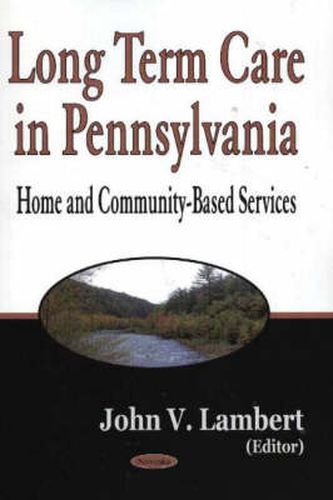Readings Newsletter
Become a Readings Member to make your shopping experience even easier.
Sign in or sign up for free!
You’re not far away from qualifying for FREE standard shipping within Australia
You’ve qualified for FREE standard shipping within Australia
The cart is loading…






Long-term care issues have high prominence among state officials in Pennsylvania as a result of its large elderly population and concern about the impact of long-term care costs on the state’s budget. Its population aged 65 and older is 15.6% of its total population, ranking second only to Florida. By 2025, 21% of its population will be 65 and older. Pennsylvania is federal and state Medicaid spending for long-term care in FY2001 was $5.1 billion – almost half of all Medicaid spending. Spending for nursing homes was more than one-third of Medicaid spending. While spending for home and community-based services has increased dramatically in recent years, these services represented less than one of every five dollars spent on long-term care in FY2001. Over the last two decades, Pennsylvania has documented issues it has confronted in providing long-term services. Among these issues are: an imbalance in financing favoring institutional care, rather than home and community-based care (which most people prefer); fragmentation in the management and delivery of services; difficult access to services, especially for low and moderate income persons who do not qualify for Medicaid; and disparities in service availability across the state and populations in need of care. According to state officials, Pennsylvania’s guiding principles in long-term care are to: control surplus growth of nursing home beds; support consumer choice; encourage expansion of home and community-based services; fund services rather than capital construction; and assure quality of care.
$9.00 standard shipping within Australia
FREE standard shipping within Australia for orders over $100.00
Express & International shipping calculated at checkout
Long-term care issues have high prominence among state officials in Pennsylvania as a result of its large elderly population and concern about the impact of long-term care costs on the state’s budget. Its population aged 65 and older is 15.6% of its total population, ranking second only to Florida. By 2025, 21% of its population will be 65 and older. Pennsylvania is federal and state Medicaid spending for long-term care in FY2001 was $5.1 billion – almost half of all Medicaid spending. Spending for nursing homes was more than one-third of Medicaid spending. While spending for home and community-based services has increased dramatically in recent years, these services represented less than one of every five dollars spent on long-term care in FY2001. Over the last two decades, Pennsylvania has documented issues it has confronted in providing long-term services. Among these issues are: an imbalance in financing favoring institutional care, rather than home and community-based care (which most people prefer); fragmentation in the management and delivery of services; difficult access to services, especially for low and moderate income persons who do not qualify for Medicaid; and disparities in service availability across the state and populations in need of care. According to state officials, Pennsylvania’s guiding principles in long-term care are to: control surplus growth of nursing home beds; support consumer choice; encourage expansion of home and community-based services; fund services rather than capital construction; and assure quality of care.